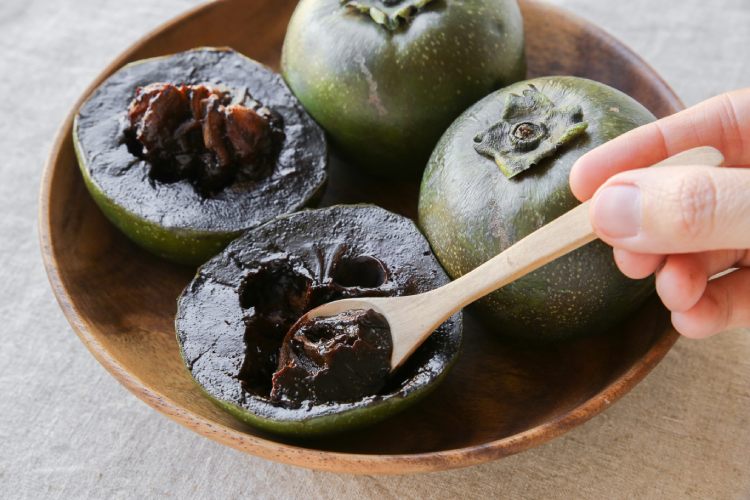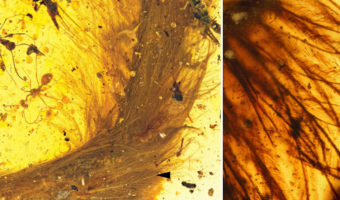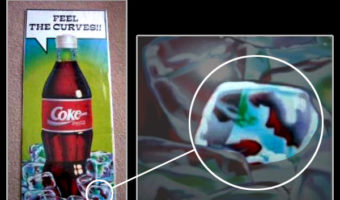10 of the Strangest Fruits You’ve Probably Never Tried
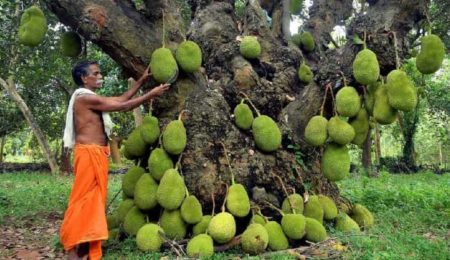
Nature is home to some of the most unusual things we’ve ever seen. This even includes a bunch of fruits that are not only weird but also truly delicious. So, from giant spiny ones to ones that remind you of chocolate pudding, here are some of the strangest fruits you’ve probably never tried.
1 Black Sapote
Famously known as the “chocolate pudding fruit,†the black sapote is an unexpected delight from the persimmon clan. When fully ripe, this tomato-like fruit turns from a firm, bright green to a shriveled, muddy-green that boasts of soft, chocolate-colored flesh within.
This flesh has been likened to a ripe papaya in texture, with flavor notes of honey, caramel, date, and mineral. The pleasing black sapote may contain a maximum of 10 or 12 seeds and is a healthy delicacy with more than three times the amount of vitamin C in an orange! But when unripe, they are astringent and have been used as fish poison. (1, 2, 3)
2 Prickly Pear Fruit
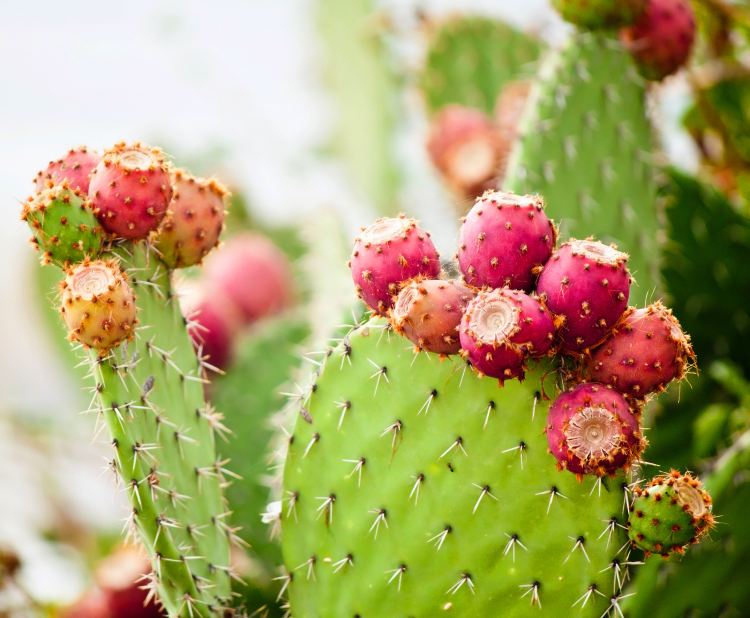
Prickly pear fruit is a delicious treat that grows on the opuntia cactus. This small and oval fruit is a staple in Mexico, and is often fondly referred to as “tuna.†Before being consumed, the tuna fruit must first be peeled carefully to remove its spines. Then, it can be enjoyed raw or turned into a number of recipes, including refreshing beverages.
This honey-sweet and succulent fruit also comes in a variety of colors that range from green to pink, red, purple, and yellow-orange. The prickly pear fruit is a good source of fiber, vitamins, minerals, and antioxidants, and is also thought to aid in weight loss. (1, 2, 3)
3 Rambutan
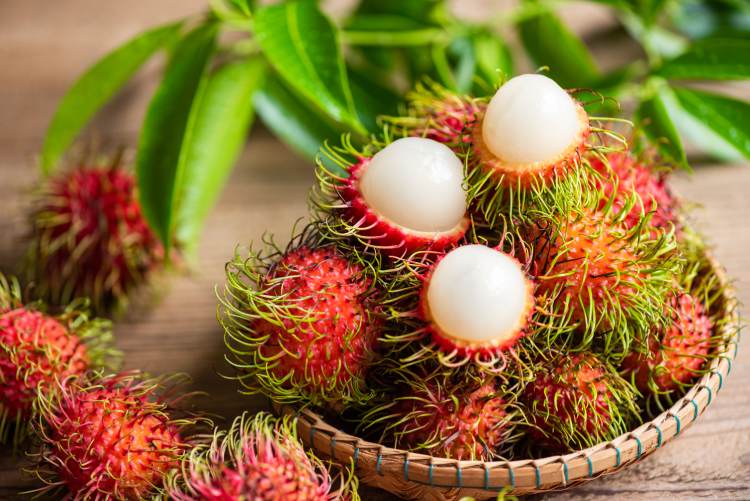
Known for its intriguing hairy exterior, the rambutan is yet another juicy oddity. It is widely grown in Southeast Asia and is an evergreen tree that is commercially propagated on small orchards.
When peeled, its reddish, leathery skin gives away to whitish, translucent flesh that tastes sweet and mildly acidic, with a texture similar to that of a lychee. The rambutan is single-seeded, and although its seed is sometimes cooked and eaten, it might actually be toxic and unsafe for consumption. (1, 2)
4 Snakefruit
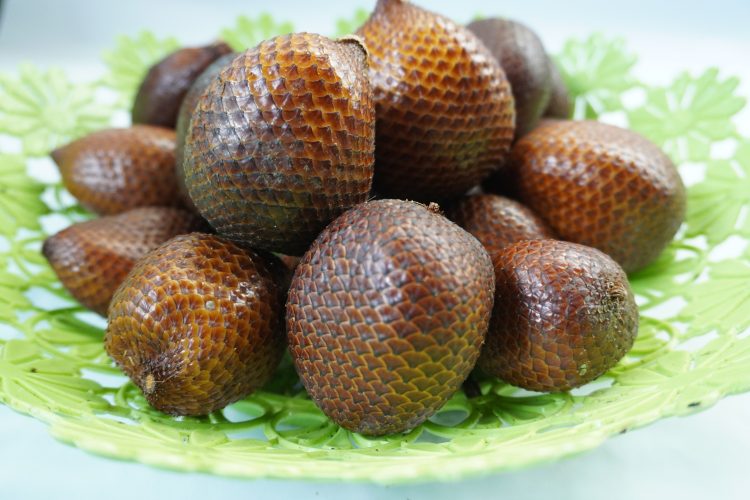
The snakefruit or “salak†is a species of palm native to Indonesia. This serpent-skinned fruit grows in clusters at the base of the tree and once harvested, can be peeled by pinching its tips and pulling at the skin.
Inside, the fruit consists of three yellowish or white meaty lobes that resemble large peeled cloves of garlic. With every bite, most or all of these lobes reveal a large seed that is inedible.
For many, the snakefruit is a beloved snack that is consumed raw, with its delightful flesh offering hints of pineapple, citrus, and honey. But if that’s not for you, it can also be turned into tasty treats such as wine, juices, or candies. (1, 2)
5 Jaboticaba
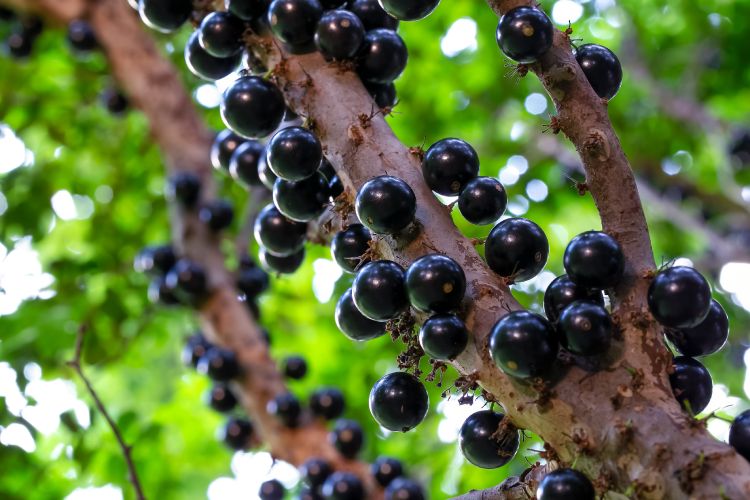
A truly unusual specimen, the Brazilian jaboticaba is a sight to behold. It is a great example of cauliflory, a phenomenon where flowers and fruits grow directly on the trunk. As a result, these trees can often be seen covered in an explosion of purple berries that look similar to a grape.
These fruits, with white or rosy-pink gelatinous flesh, have an overall grape-like flavor that is mildly acidic and sweet. Unfortunately, fresh jaboticaba fruits might be unavailable outside its native range because of a short shelf-life. Nevertheless, it can still be enjoyed as jams or other preparations. (1, 2, 3)
6 Sugar-apple
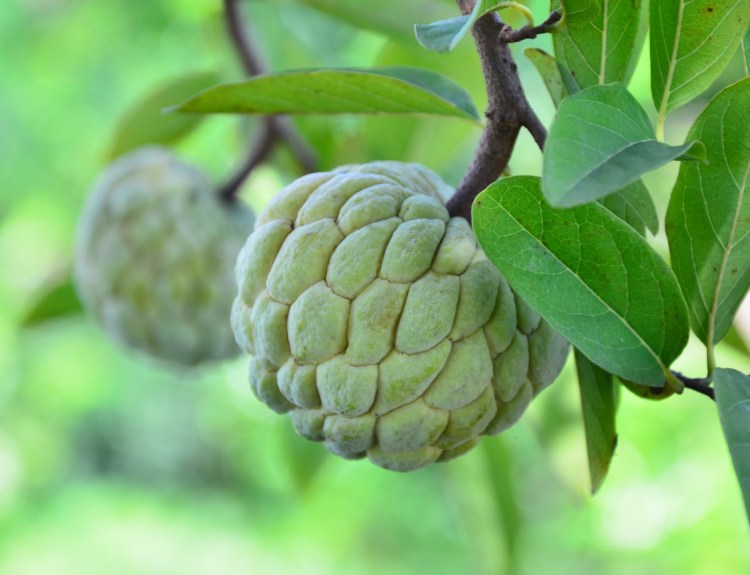
Native to the West Indies and the American tropics, the sugar-apple is a fragrant fruit with a thick and knobby rind. It belongs to the custard apple family, and has a creamy flesh that is soft, slippery, and grainy to touch. When fully ripe, the sugar apple readily breaks open to reveal clusters of white or light-yellow fleshy segments that taste sweet and are reminiscent of custard.
Within these pulpy bits, a single fruit can have some 20 to 40 hard and shiny seeds that also seem to have an unusual use. When ground up, these seeds are said to be effective as an insecticide! (source)
7 Jackfruit

Can you imagine a fruit being used as a meat substitute? However, that is exactly what the jackfruit is known for! Being the largest tree-borne fruit, the jackfruit can grow as big as three feet in length, 20 inches in width, and 110 pounds in weight. The interiors of this fruit are also peculiar, with large yellow bulbs placed among ribbon-like structures. Thanks to such a stringy texture, canned jackfruits are sometimes called “vegetable meat†and thought to resemble pulled pork or chicken.
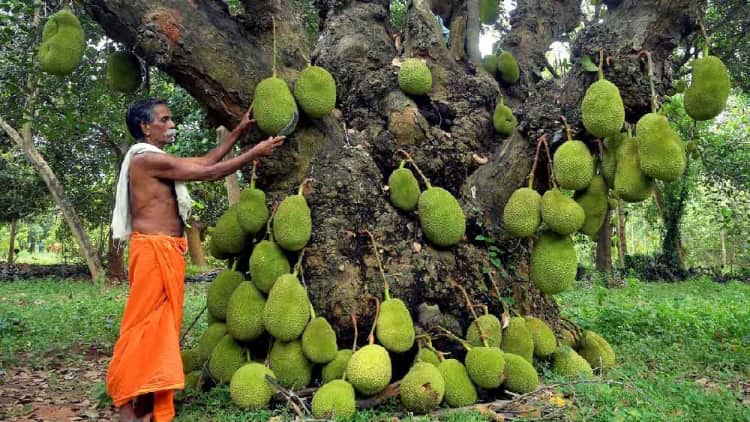
Consequently, it has become a popular meat substitute that many vegans and meat lovers seem to enjoy. It does, however, have some downsides. Besides its strong odor when ripe, the fruit also has a lot of gummy latex that makes cooking with it a chore. Regardless, jackfruit remains a beloved delight noted for its pineapple and banana-like flavor. (1, 2)
8 Gac fruit
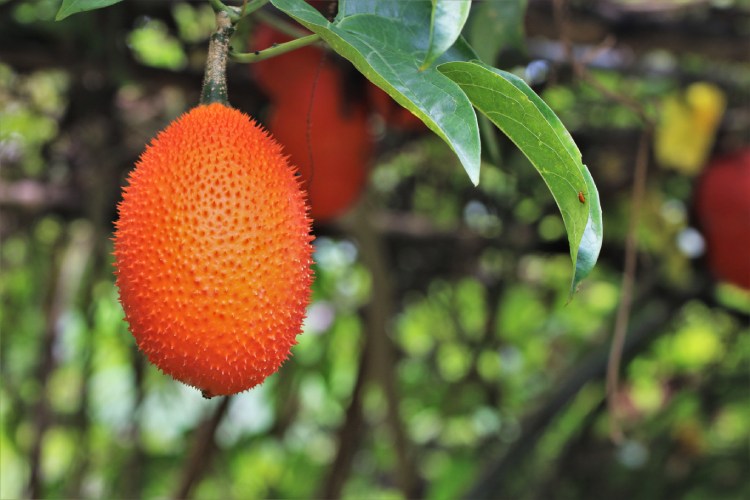
With its spiny exterior and orange-red skin, there is no mistaking the gac fruit. It is typically round or oblong in shape, measuring about 5 inches in length and 4 inches in diameter. When cut open, this Southeast Asian fruit reveals a blood-red flesh rich in beta-carotene, with seeds shaped like wooden turtles. In countries like China, the gac fruit has a history of medicinal use and is thought to aid in the treatment of numerous ailments.
Additionally, the gac fruit is also used during special occasions in the form of a red-colored sticky rice preparation. So, if you’re at a wedding or a New Year celebration in Vietnam, do keep an eye out for this dish, called xôi gấc! (1,2)
9 Cashew Apple
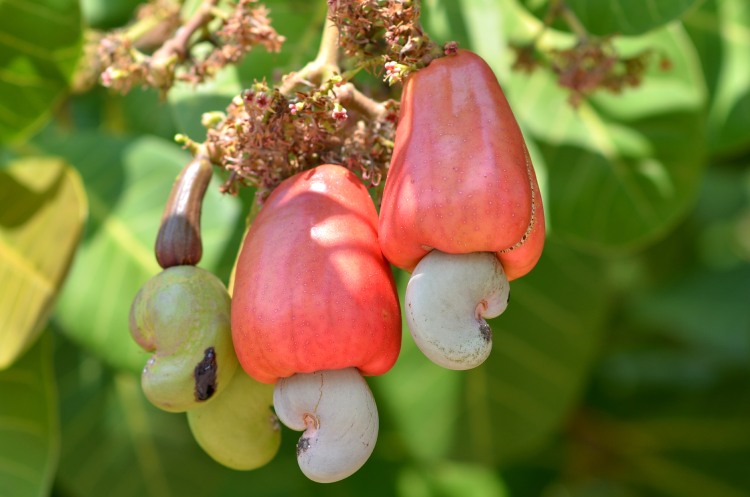
Ever wondered how cashew nuts grow? The cashew nut, as its name suggests, is the seed of the cashew tree, borne on a pear-shaped fruit known as the “cashew apple.†Unlike the nut, the cashew apple is a much less traded commodity because it bruises and spoils easily. Nevertheless, the fruit is widely enjoyed within its home ranges, where it is either eaten raw or turned into alcohol, juices, and other products.
Once mature, the seed can be separated from the cashew apple. It is then processed carefully to remove the shells and extract the beloved nut within. This process, however, is quite hazardous because of the presence of corrosive chemicals in the shells of the nut. In fact, these chemicals are so harsh that without proper precautions, they can cause vicious burns! (1, 2)
10 Lodoicea
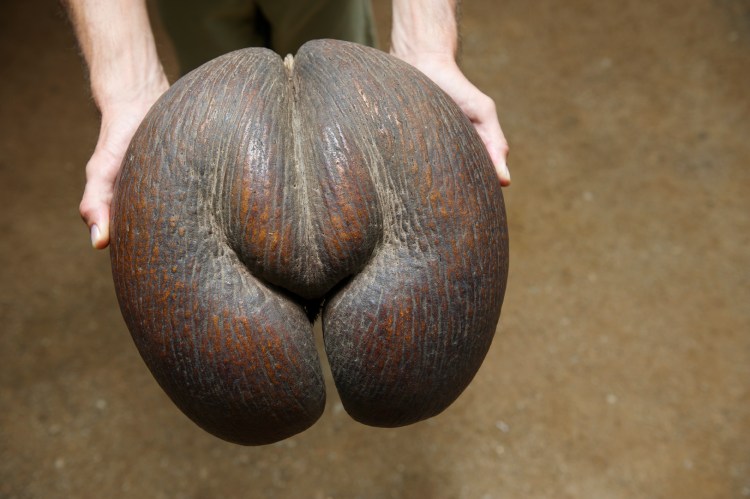
Endemic to the Seychelles in the Indian Ocean, this species is interesting to scientists and tourists alike. Unsurprisingly, it holds some botanical records that are quite wonderful! For instance, the Lodoicea has the largest known wild fruit and the heaviest mature seed in the world that has been measured to be as much as 29 pounds. However, it also has another reason for being an Internet sensation – the extremely suggestive shape of its seed.
Although it is rarely eaten, the Lodoicea’s flesh has been described as mildly sweet with a citrus undertone. These trees also have a limited population, due to which they are carefully conserved and guarded. (1, 2, 3)
So, what fruit are you going to try next? Tell us all about it below!














